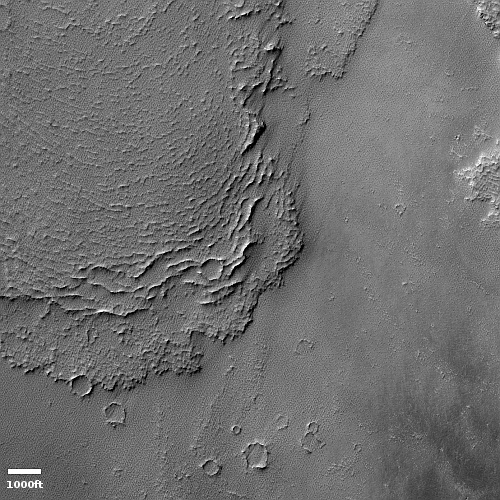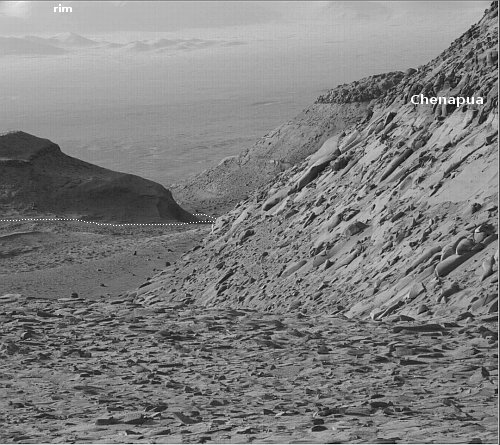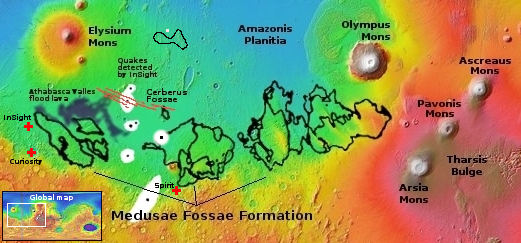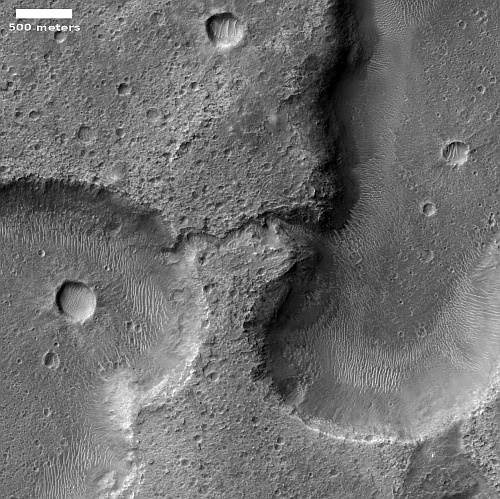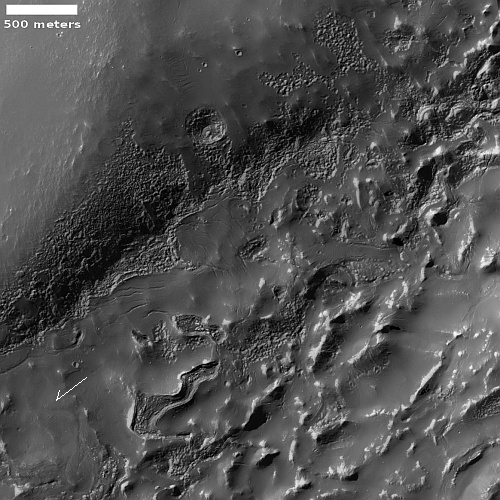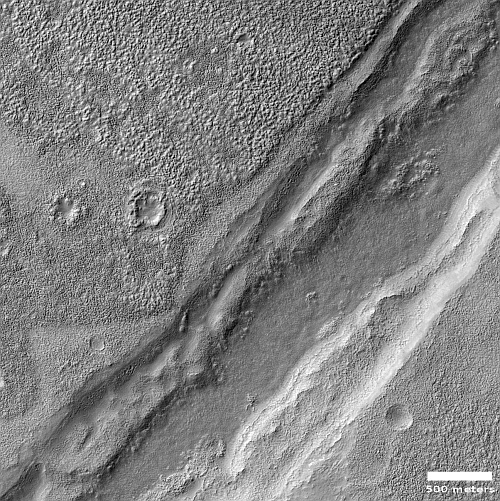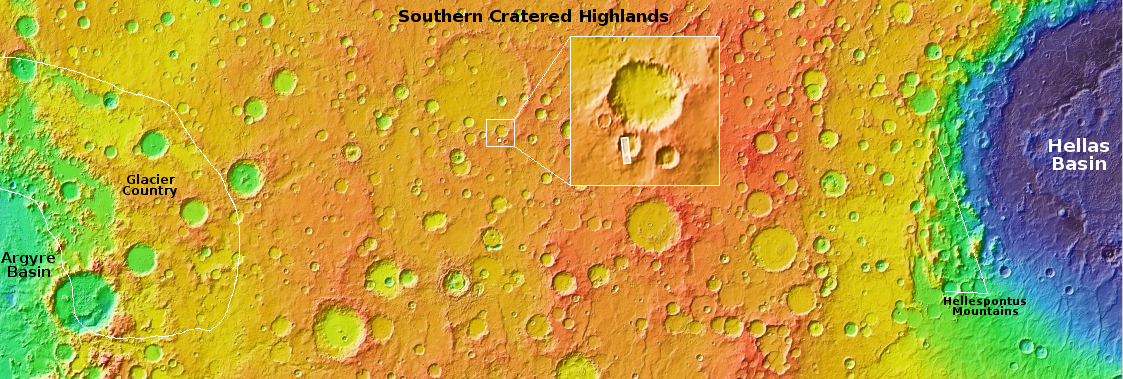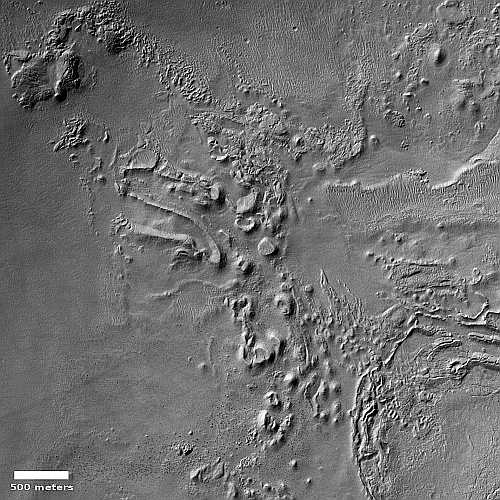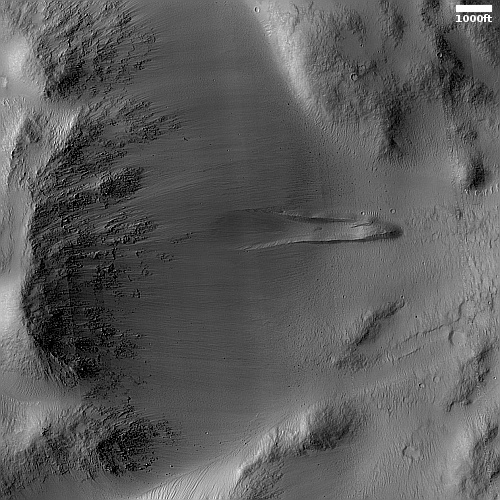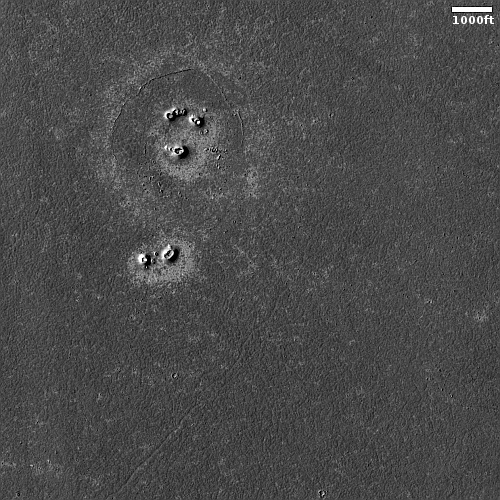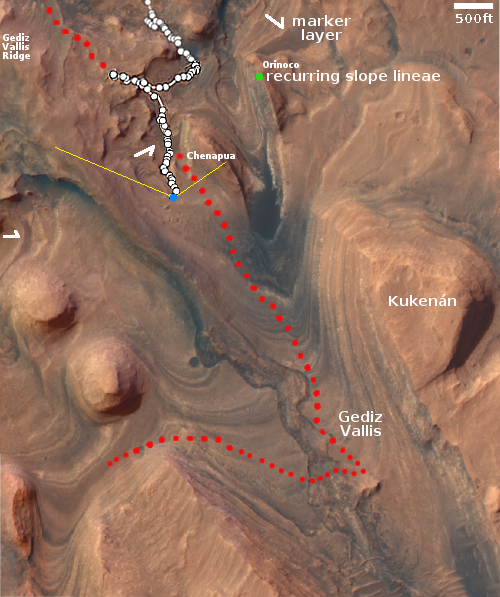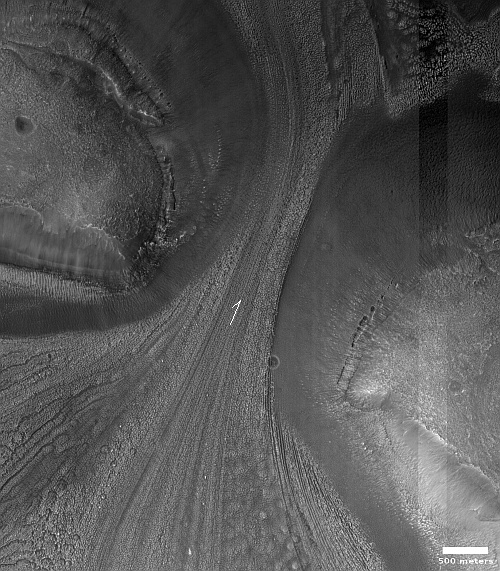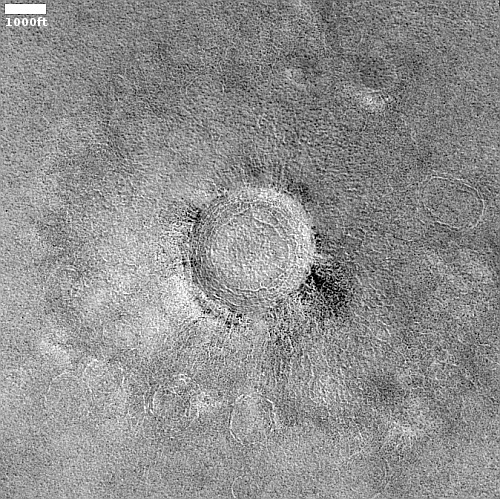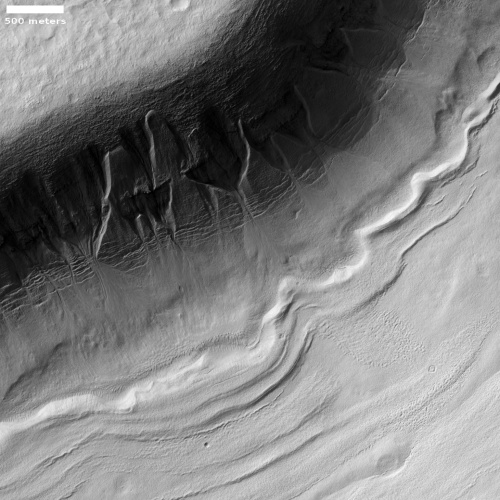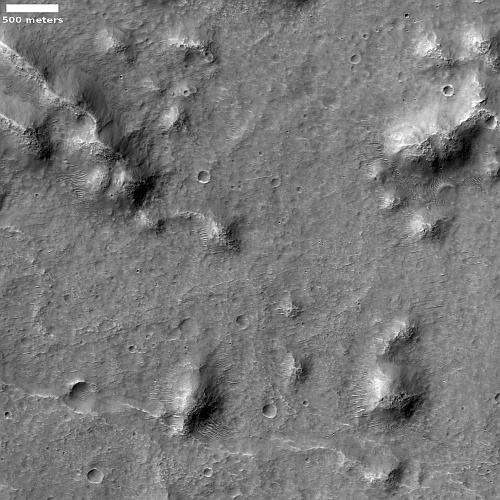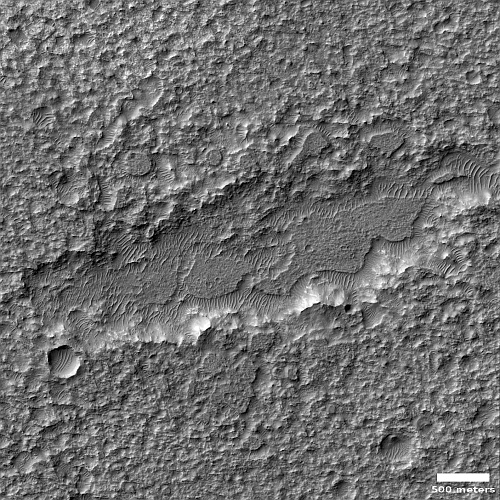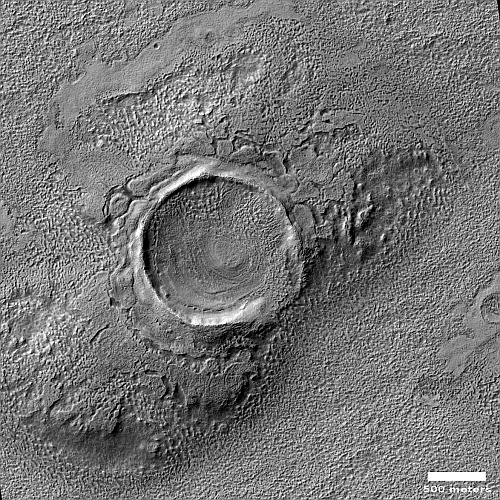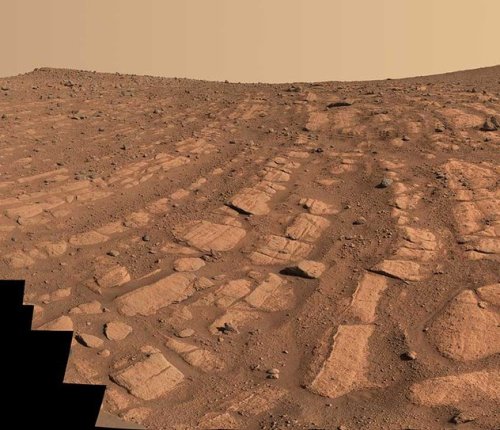A lava flow on a Martian lava plain
While much of surface of the Martian equatorial regions is comprised of volcanic flood lava, the place where it is most obvious and evident is on the flanks of the three giant volcanoes of the Tharsis Bulge. Here, lava did not simple spout from surface vents to flood low-lying large areas, filling those depressions quickly almost like water. Instead it issued from vents on the slopes of those mountains, or from their calderas at their peaks, and flowed downhill almost like tsunamis of magma.
The picture to the right, rotated, cropped, reduced, and sharpened to post here, is a great example. Taken on March 11, 2023 by the high resolution camera on Mars Reconnaissance Orbiter (MRO), it shows the foot of one such flow, frozen in place as it oozed down hill from the Arsia Mons, about 300 miles away to the northwest.
» Read more
While much of surface of the Martian equatorial regions is comprised of volcanic flood lava, the place where it is most obvious and evident is on the flanks of the three giant volcanoes of the Tharsis Bulge. Here, lava did not simple spout from surface vents to flood low-lying large areas, filling those depressions quickly almost like water. Instead it issued from vents on the slopes of those mountains, or from their calderas at their peaks, and flowed downhill almost like tsunamis of magma.
The picture to the right, rotated, cropped, reduced, and sharpened to post here, is a great example. Taken on March 11, 2023 by the high resolution camera on Mars Reconnaissance Orbiter (MRO), it shows the foot of one such flow, frozen in place as it oozed down hill from the Arsia Mons, about 300 miles away to the northwest.
» Read more

